Welcome to the Blumstein Lab
The evolution of behavior and translational behavioral biology–the integration of behavior and conservation biology
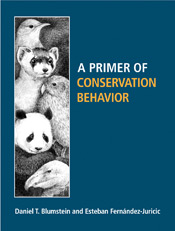 A Primer of Conservation Behavior is now available. Learn more about the book by visiting the book’s website. |
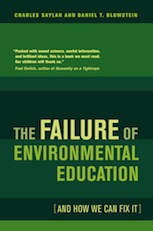
The Failure of Environmental Education (And How We Can Fix It) is now available. Time.com lists it as one of 7 education books to take to the beach. Learn more about the book, read a sample chapter, read reviews at the UC Press website. |
 Eating Our Way to Civility: A Dinner Party Guide is now available as an e-book. Learn more about the e-book, and contribute to the movement to increase civility by having fun and declicious dinner parties at the Eating Our Way to Civility blog. Check out Dan’s UCLA Today interview about the book and blog. Eating Our Way to Civility: A Dinner Party Guide is now available as an e-book. Learn more about the e-book, and contribute to the movement to increase civility by having fun and declicious dinner parties at the Eating Our Way to Civility blog. Check out Dan’s UCLA Today interview about the book and blog. |
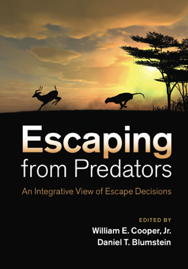
Escaping from Predators is now available from Cambridge University Press as a hardback and as an e-book. Check out the Atlas Obscura piece on escape (with videos!). Check out reviews in Quarterly Review of Biology, and Animal Behaviour. |
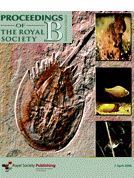 |
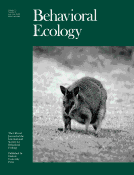 |
 |
 |
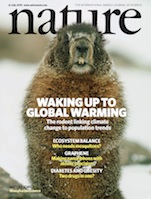 |
 |
 |
What do we do?
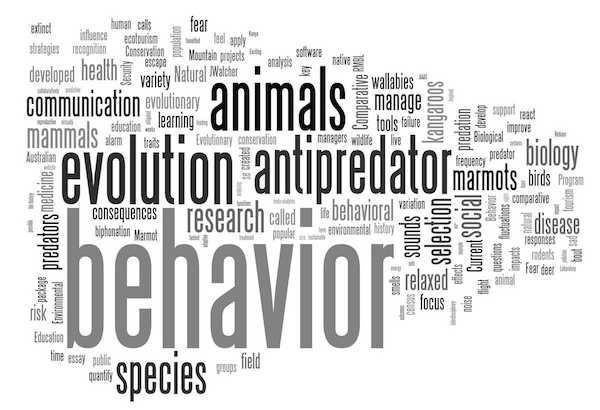
Dan’s cv, publications
Interested in being a Ph.D. student in the lab?
Information for prospective volunteers
Recent, current, and forthcoming projects
 |
The 15 species of marmots make an ideal experimental system to ask questions about the evolution of social behavior and communication because they live in a variety of habitats, exhibit a range of social systems, and all species emit between one and five types of alarm calls. Past studies have focused on the meaning of these calls. Current work focuses on yellow-bellied marmots at the Rocky Mountain Biological Laboratory in Colorado to better understand the evolution of alarm calling and social variation, antipredator behavior, as well as how alpine animals respond to climate change. The behavior and population biology of the marmots of RMBL have been continuously studied since 1962. Exciting new research directions focus on understanding reproductive suppression in females, coalitionary alliances in males, the consequences of social relationships, and the importance of ‘stress’ in reproduction and health. Visit the RMBL Marmot Project website for more information and a comprehensive list of publications. |
Links: The Marmot Burrow, The Marmots of RMBL, Marmot Minutes (blog), Learn more about the Rocky Mountain Biological Laboratory (and a bit of marmot research) in this RMBL video
Popular Press: Science News, Science, Natural History, Los Angeles Times, Audubon Magazine , The Rocky Mountain News, The Aspen Daily News, KBUT Nature Notes-2008 radio interview, The New York Times, Glenwood Springs Post Independent, University of Lousiana, Monroe News, KBUT Nature Notes 2011 radio interview, Vanguardia, also see the special featurette about studying marmots included with the 15th Anniversary Edition release of the film Groundhog Day. Our long term research was featured in an article in The Scientist in July 2013. Aspen Public Radio broadcast two pieces about Team Marmot’s work: The Marmots of RMBL, and What Marmots Can Teach Us About Plastics. An old article from the Fort Scott Tribune I just discovered poking fun at RoboBadger…
Popular press for the PNAS heritable victimization article: Cosmos, Discover, Live Science, New Scientist, PhysOrg.com, Science News, Wired Science, NPR’s 90-second Naturalist, and more…
Popular press about the marmot masculinization work: BBC, Live Science, National Geographic Daily News, and more…
Celebrate groundhog day long enough and the press comes! A fun article from the LA Times.
Our PRSB paper about heritable alarm calls was a hit in German speaking parts of the world…as was our PRSB paper about the delayed beneifts of play: Die Welt, Der Tagesspiegel, etc.
Marmots and marmot research featured in a long article in Men’s Journal about climate change and the end of skiing in Aspen, Colorado.
A fun interview about marmots and climate change on WBEZ-Chicago’s EcoMyths radio show.
Our Behavioral Ecology paper about how less popular marmots emit more alarm calls got some press in ScienceShots, and the Times Live.
A fun newspaper article about a couple who has created an amazing video archive of woodchuck behavior.
Dan and Tina’s social network work featured in a long feature in BioScience.
A wonderful video from 9NEWS (NBC Denver) about the soap opera (The book of marmot?!) that is our RMBL study.
| Popular press for the 22 July 2010 Nature cover story about how shorter winters have led to fatter marmots and a population explosion over the past decade includes: The LA Times, The NY Times, Discovery News, New Scientist, The Telegraph, Time Magazine, Scientific American, Wired Science, USA Today, AFP, LiveScience, Discover Magazine, Eureka Alert, PhysOrg, The Christian Science Monitor, CBS News, Irish Times, Planet Earth, The Money Times, AOL News, The Denver Post, and more! Listen to Arpat’s Nature PodCast interview and Dan’s NPR interview. And, don’t forget to read the News of The World to learn about Arpat’s summer vacations… |  |
Talks: 5 March 2008: Utah State University–Ecology Center Seminar Series: Conservation behavior lessons from marmots
 |
Virtually all animals are vulnerable to predation at some point in their lives and a key response to predators is flight. Colleagues and I have generated large data sets in birds, mammals, and lizards to understand the evolution of escape behavior. Through many empirical studies and large-scale comparative studies and meta-analyses, we have identified key factors that explain variation in escape behavior. By identifying mechanisms that influence flight initiation distance, we are able to apply this knowledge to understanding human tolerance of wildlife. |
Popular Press: Atlas Obscura piece on escape
| Fear is elicited by specific sights, sounds, and smells. What is it that makes sounds scary? Why do certain smells evoke fear in animals? How can knowledge of this be used? In a series of studies with marmots, kangaroos, deer, and people, colleagues and I are studying the biological basis of fear. Recent studies have demonstrated that non-linear sounds (noise, abrupt frequency fluctuations, biphonation, and subharmonics) are uniquely alarming and emotionally evocative to mammals, including, apparently, humans. Specifically, horror film soundtracks have more noise than would be expected, while sad dramatic movie scenes use abrupt frequency fluctuations and biphonation to make us feel scared or sad. Other studies seek to better understand how predator urine can be used as natural repellents, and by doing so, hopefully save many ‘problem’ animals from elimination. |  |
Popular Press: Australian Geographic, Science News, AFP, Wired News, Discovery News, ABC (Australia), NY Daily News, The Guardian, The Independent, The Telegraph, I09, The Daily Mail, CBS Evening News (video), BBC World Service (audio clip), CBC–As It Happens, The National (Abu Dhabi), The Washington Examiner, BBC Science In Action Radio Show, Discover’s DiscoBlog, Wired, Live Science, MSNBC, Discover, Wired Science, Wall Street Journal, Science Network-Western Australia, and more…
Popular Press about the 2012 Biology Letters paper on the sound of arousal in music: US News, NPR, MSNBC, Time, UCLA Newsroom, LiveScience, Daily Mail, California Watch, Irish Independent, ToneDef, Medical Daily, LA Weekly, ABC Radio (Australia) interview with Dan, video interview with Dan by David Sloan Wilson on Evolution: This View of Life, BYU Radio on Sirius FM, and more…
Talks: 2 February 2010: UCLA Darwin Evolving Curious Naturalist Series: The sound of fear
17 March 2011: Aspen Center for Environmental Studies: The sound of fear: A journey from mountain marmots to Hollywood
27 October 2012: TEDx-UCLA: The Sound of Fear (in less than 8 minutes)
17 January 2013: NIMBioS talk: The sound of fear: A journey from marmot meadows to Hollywood (55 min).
Halloween 2013: Spotify featured our work which generated some fun press from ABC News, PBS, Parade, USA Today.
Dan was interviewed for 99% invisible on scary sounds and scary music.
Dan was interviewed for ABC Australia’s radio show Beyond The Lab on The Sound of Horror.
Dan was interviewed for ABC Australia’s radio show It’s Just Not Cricket on scary music and films.
| Advances in comparative methods have led to a renaissance in the study of the evolution of behavior. Past studies have focused on the evolution of social and communicative behavior in ground-dwelling sciurid rodents, the evolution of infanticide in rodents and, as described above, many studies looking at the evolution of antipredator behavior and other life history traits in birds. New work seeks to understand the evolution of traits related to health and disease. |  |
Popular press: Discovery News; Discover Magazine; Daily Mail; NPR Blog; UCLA Newsroom; and more…
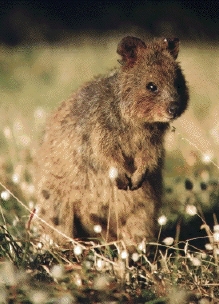 |
Many birds and mammals vary the amount of time allocated to the mutually-exclusive activities of foraging and antipredator vigilance as a function of the number of adjacent conspecifics. This fundamental tradeoff has important consequences for the evolution of sociality but could result from two very different pathways: feeding competition, or a reduction in the risk of predation. Comparative studies focused on the evolution of so called ‘group-size effects’, and empirical studies focus on marmots to identify mechanisms underlying vigilance. |
Popular Press: Ecos Magazine
Talks: 6 March 2008: Utah State University–Ecology Center Seminar Series: Antipredator behavior of kangaroos and wallabies: integrating behavior and conservation
| Many species are isolated from the predators with which they evolved. Remarkably, we know little about how long presumably adaptive antipredator behavior persists in a species’ behavioral repertoire once selection is relaxed for antipredator behavior. Previous work focused on kangaroos and wallabies that are either found with predators, or have been isolated from them for 30 to 9,500 years. The goal was to understand how long antipredator behaviors of different degrees of sophistication persist under relaxed selection. An exciting dimension of this research created virtual worlds where we studied relaxed selection for antipredator behavior. We extended this work to studying relaxed selection on antipredator behavior in marmots and deer, and now are working on studies of other Australian native mammals. | 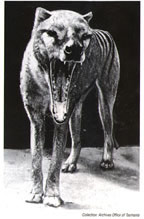 |
Popular Press: Science Daily; Terra Daily; PsychCentral; The NY Times
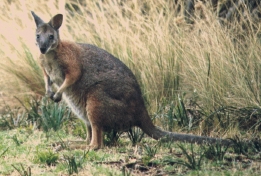 |
Knowledge of animal behavior can help us conserve and manage endangered species. A common management intervention to recover a locally extinct population is captive breeding followed by reintroduction. Sadly, most of these reintroductions fail, and predation is often implicated as the cause of failure. Previous work focused on detailed studies of predator recognition abilities in kangaroos and wallabies as well as the critically-endangered Vancovuer Island marmot, combined with studies that focus on specifically what is learnt when animals are trained to recognize predators. Work sought to understand the degree to which kangaroos and wallabies benefited from living socially. Even relatively non-social species may benefit from aggregation. Current work with Australian native mammals seeks to understand if we can jump-start natural selection or learning by exposing animals to a few predators before they are released into predator-rich areas. Other work seeks to apply general behavioral principles, such as learning and fear conditioning, to manage “problem” animals, while additional work seeks to document how anthropogenic activities and pollution influence behavior. In addition, Esteban Fernández-Juricic and I wrote the first conservation-behavior textbook: A Primer of Conservation Behavior for Sinauer. |
Popular Press: Science News, Nature, Nature Science Update, NatureAustralia, Haikai magazine, Sydney Morning Herald
Pigeons home faster through polluted air was the subject of articles in The Economist, LA Times, livescience, The Daily Mail, and Conservation Magazine, and got extensive press in France (e.g., Figaro, RTL, TF1, RSE magazine and more!) and in China.
| Ecotourism is the fastest growing part of the world’s largest industry, tourism. Yet, in order for ecotourism to be sustainable, we must know much more about how non-humans perceive the myriad of impacts associated with tourism so that they can be minimized. Unfortunately, most studies focus on a single species and there is no theory managers can use to predict how a particular species might react to, say, the construction of a hiking trail. Current and future work aims to develop predictive models about how species react to human impacts based on an understanding of life-histories and evolutionary “experiences”. |  |
Popular Press: El Colombiano, Science Update, The Conservation Behaviorist, Conservation Magazine
Press on: The omnivores dilemma: diet explains variation in vulnerability to vehicle collision: The Week, Science News, Conservation Biology News
Extensive Press on: How nature-based tourism might increase prey vulnerability to predators: The Washington Post, Los Angeles Times, Daily Mail, The Independent, Science News, Outside Magazine, Washington Times, Take Part, Mother Jones, Scientific American, KPCC Air Talk, German Public Radio (Deutschlandfunk), Smithsonian, Folha de S.Paulo, Animals Today Radio, Care2.com, and many, many more… Plus, read our popular perspective of this in The Conversation.
Increased tolerance to humans among disturbed widllife was the subject of articles in: The Wildlife Society, Nature World News, NZ Health Tech, The Scientist, Love Nature, Science World Report, and more…
| At UCLA we teach an intensive field biology class called the Field Biology Quarter. I’ve taken groups of highly-motivated undergraduates to Australia, Kenya, the Virgin Islands, and Belize for a bout of intensive research and learning. Students write proposals while in the US, then, working collaboratively in groups of three, have 3 weeks in-country to conduct the research. A bout of analysis and writing follows back in LA. In the past, students have conducted first-rate research and a variety of these student-generated projects (mostly focusing on antipredator behavior and communication) have been published. Some have even received popular press! |
Past Teaching Assistants: Tiffany Armenta, Janice Daniel, Jonathan Drury, Brenda Larison, Nicole Munoz, Matt Petelle, Brian Smith, Lucretia Olson
Popular Press: Natural History, Science Update, Nature, Science News, UCLA Today
| Colleagues and I created a field of Natural Security. Inspired by some inflexible responses following the attacks of September 11th, and our slow responses to adapt to to asymmetrical conflicts with insurgents, we use the lessons of 3.5 billion years of life to try to develop novel defensive strategies. All animals must learn to live with risk; those that don’t die or become extinct. Thus, the term ‘war on terror’ is flawed in that it assumes we can eliminate risk; we can’t and therefore must effectively manage it. The diversity antipredator behavior provides a variety of strategies animals use to manage their threats. Outcomes of this interdisciplinary collaboration have included an edited volume, called Natural Security, a symposium at the 2009 AAAS meetings, a Nature Opinion piece, and a ONR-G meeting in Edinburgh in 2010. |
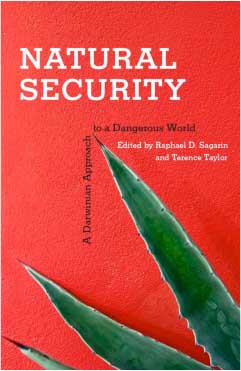 |
Media: Science Daily (reprinted elsewhere), Swedish Radio (in Swedish), Global Security Newswire, SciCom Interview
Links: Darwinian Security Website, Natural Security Book
| Colleagues and I have developed an Evolutionary Medicine Program at UCLA. In addition to creating the first-ever undergraduate minor in evolutionary medicine, we added a MS degree program and are cultivating an inter-disciplinary conversation across campus about how biomedical research and, ultimately, clinical outcomes, can improve from asking all of Tinbergen’s four questions about health and disease. My own work puts disease and adaptations to avoid disease into a life-history history perspective with the aim of searching for bio-inspired insights that may improve medicine and public health. |
 |
Links: UCLA EvMed website
 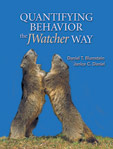 |
To study behavior one must often quantify it. With NIH support, we developed, and freely distribute, a new and powerful event-recorder and analysis package. It is written in the Java(TM) computer language so that works on virtually any modern microcomputer. Sinauer has published the JWatcher book–Quantifying Behavior the JWatcher Way. |
Links: JWatcher web site. Book reviews: Condor, Integrative and Comparative Biology, Quarterly Review of Biology.
 |
We built tools to inventory animals by detecting, recording, and analyzing their sounds. Among other functions, this enabled behavioral ecologists to study the temporal and spatial dynamics of acoustic communication, and conservation biologists and wildlife managers to acoustically census animals. With NSF support, we developed VoxNet: an integrated software and hardware package which improved existing technology in four main areas: software, near-real time event recognition, energy efficiency, and a much longer communication range. |
Links: Birds of the Rocky Mountain Biological Laboratory, VoxNet website (includes software downloads)
Popular Press: Conservation Magazine, Editor’s choice article at Journal of Applied Ecology
| I feel that if we love nature, we’re obligated to protect it. Thus, I’m involved in several projects that seek to translate science to action through environmental education and public outreach. Charlie Saylan and I have written a book-length treatment of our PLoS-Biology essay–The failure of environmental education (and how we can fix it) for University of California Press (to be published in 2011). I’ve started to write Op-Ed pieces, and I write popular pieces whenever possible. A recent example of this is my essay in Thoreau’s Legacy: American Stories About Global Warming on pika. I also take children and adults out ‘marmoteering’ as part of the Rocky Mountain Biological Laboratory’s Environmental Education Program to share my excitement of biology and animal behavior with others.
Read the Earth Day 2011 OpEd that Charlie and I wrote in The Christian Science Monitor, and see how I would spend $1 million to help save the Earth. |
|
Media: Interview with Charlie and Dan on Progressive Radio Network’s Paradise Parking Lot (starts 30 min in), our interview on the David Sirota Show; Take Part interview, Charlie’s interview on the Radio EcoShock show (near the end), Charlie’s interview on Tavis Smiley, Charlie’s interview in Yale e360, Clearing Magazine, Dan’s interview on BYU Radio on Sirius FM about fear and civility (near end of interview), Dan and Charlie on 16 Aug 13 episode of Stuart Campbell’s Consider This Radio Show, and more…
Dan & Charlie speaking at the first ever White House Summit on Environmental Education.
Dan featured in a film about eco-eating and the ethics of food choice.
Reviews and comments about: The Failure of Environemental Education (And How We Can Fix It): Audubon (lead essay), Nature Climate Change, Green Economics, UCLA Newsroom, Time.com, Miller-McCune, The Arizona Republic, and more…
Buy books on this page from Amazon:
A special thanks to major sponsors and research facilitators…
Some material on these pages is based upon work supported by the National Science Foundation under Grant Number (DEB-1119660) Any opinions, findings, and conclusions or recommendations expressed in this material are those of the author(s) and do not necessarily reflect the views of the National Science Foundation.
Back to: The Department of Ecology and Evolutionary Biology, UCLA
Back to: Animal Behavior @ UCLA
Last updated: 17 Sept 16




